75 Years on, Jensen’s Interceptor Still Captures Hearts
In 1949, when Alan and Richard Jensen had to choose a model name for their hand-built English car, they settled on “Interceptor.” In retrospect, the choice was wise: The name is a great bit of marketing, a moniker that suggests power and speed, attributes coveted by many car buyers. Seventy-five years on, that first automobile, and the versions that followed it, continue to attract a dedicated following of enthusiasts. Many seem to be as much in love with the name as with the automobile itself.
Lars Ganesh, a Jaguar mechanic in Sweden, wanted a car to work on in his spare time—one that didn’t remind him of his time on the job—and he eventually settled on a Jensen Interceptor. “If you then add on maybe the coolest name of a car ever, it’s perfect,” he writes. “Interceptor is a name that you just can’t resist.”
In many ways, the Interceptor delivers on the promise its name suggested, with a big American V-8 engine for power and Italian styling that suggests forward motion and potency. But it took the brand a while to get the car to that point and once there, the company only hung on tenuously.
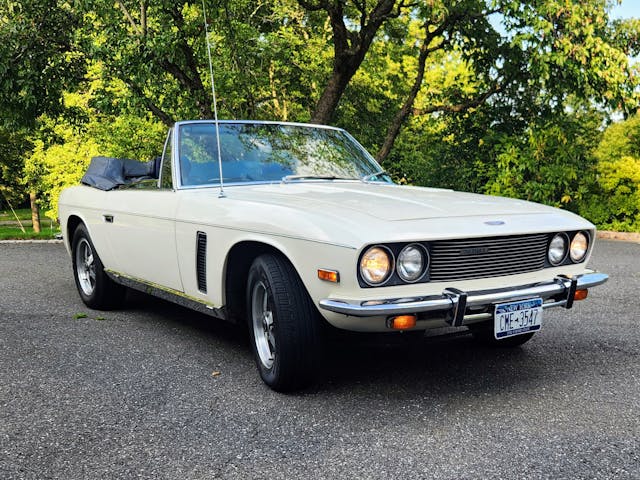
The Jensen brothers were better known as suppliers than as automakers: They manufactured vehicles for a variety of car companies, including Austin and Volvo. In between building machines for other makers, the brothers dabbled in marketing cars of their own design. These ran the gamut from the woody-like shooting brake of 1935 to a fiberglass sports car of the 1950s. The Interceptor, which premiered as a somewhat stodgy convertible in 1949, bloomed in the late ’60s and early ’70s with the production of more than 6000 pretty machines.
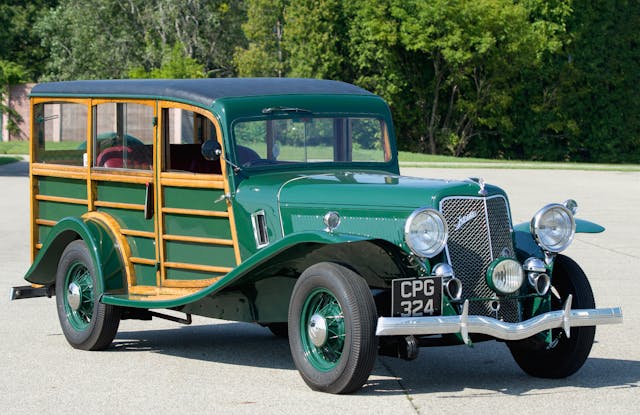
The first-generation Interceptor was built on an Austin A90 chassis that had been reinforced and extended. Only 88 cars were produced, 36 convertibles and 52 coupes. Like earlier Jensen offerings, the cars were powered by an engine cribbed from the parts bin of another manufacturer, in this case, an Austin 4-liter six-cylinder. With 132 horsepower on tap, it was able to propel the 3200-pound car adequately.
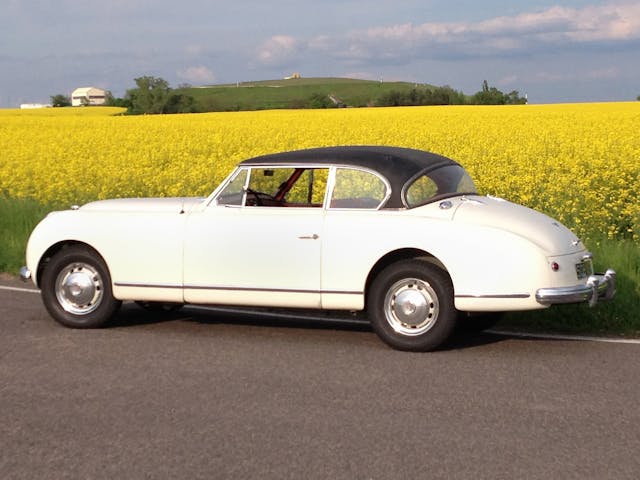
But one buyer wanted more. John Stricken, a Canadian rally driver, owned a Chrysler Hemi modified by Briggs Cunningham to deliver 250 horsepower from 331 cubic inches—great numbers for the time. He asked the Jensens to install it in an Interceptor. As accomplished engineers, the Jensens knew their car couldn’t handle that much power, so they got to work modifying the chassis. Today, that very special Interceptor belongs to Joerg Huesken of Dresden, Germany. It’s a nifty machine, but the sheetmetal lacks the design drama that would later come to distinguish the Interceptor.
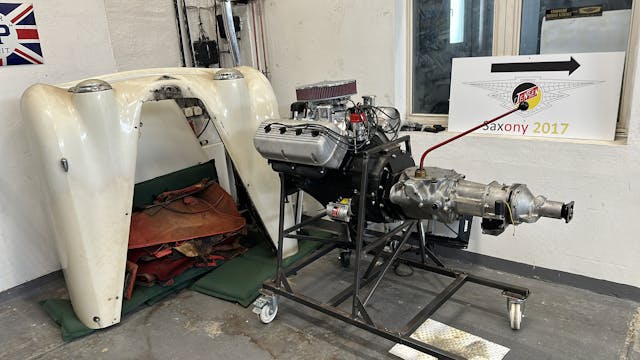
The drama began in ’66 with the introduction of the second-generation Interceptor. In the confusing manner that characterizes Jensen, the first automobiles of that generation were dubbed Mark I, a nomenclature that ignored the Interceptor that preceded it in the ’50s. The second-gen car was more of a reincarnation of than a direct successor to the first-gen model, which had ceased production in ’57.
With a body by Carrozzeria Touring, this new Interceptor seemed heaven-sent, but not everyone was pleased. For the very English Jensen brothers, the decision to build the Italian-styled cars at Italy’s Vignale coachbuilding shop added insult to injury. The call was made by engineering and production management people whom the Jensen brothers had installed in top positions. The decision didn’t sit well with the brothers, who counted coachbuilding among their major skill sets, and they retired from the company soon thereafter.
The Interceptor’s interior featured an abundance of wood and leather and, in the dashboard, the classic Smiths gauges that have graced the best of England’s automobiles. Under the hood was a Chrysler V-8. The second-gen Interceptor was a great combination of sexy Italian design, refined English luxury, and brute American power. “It’s like a Dodge Coronet that went to college at Oxford,” Jay Leno said after viewing a restored 1974 Interceptor on Jay Leno’s Garage.
Although the second-generation car left the Jensen brothers cold, it warmed the cockles of the hearts of American car buyers who were ready for something different than what Detroit was offering. The fact that the Interceptor came with Chrysler’s potent 383 V-8 under the hood did nothing to dampen their enthusiasm. Of course, U.S. sales of the Interceptor were still minimal compared to the standard domestic offerings, but with the cool name, big engine, and great looks, the Interceptor developed a bit of a cult following in America.
Several versions of the second-generation Interceptor—Mark I, II, and III—were built from 1966 to 1976 for a total of 6408 machines. Each new series was slightly modified and improved, but all shared the same basic shape, and all were equipped with Chrysler V-8s.
The most technically advanced Interceptor was the FF model. Only 320 copies of this very special car were produced from 1966 to 1971. All were right-hand-drive, so they couldn’t be sold in the U.S. where standard Interceptor models were doing well. An extra five inches of length gave the FF a sleek silhouette. A technical triumph, it offered anti-lock brakes and four-wheel drive, the first all-wheel propulsion system offered on a road-going car. Weak front axles were a major drawback—imagine what happens if you lose one front drive wheel under acceleration—but the rarity of the car and its innovations make it a desirable machine. Excellent copies can reportedly bring six figures.

The Mark III Interceptor came on the heels of the Mark II and was introduced for the 1971 model year. The 440-cubic-inch Chrysler engine replaced the 383, which had been seriously detuned by Chrysler to meet domestic emissions standards. Most cars were fitted with a four-barrel carbureted version of the engine that generated 305 horsepower, but a high-performance version with Chrysler’s “Six Pack” induction system (triple two-barrel carburetors) was offered in a special model, dubbed SP.
While the FF was the most technically sophisticated Interceptor, the ’71 Jensen SP was the most powerful. Although it looked exactly like other Interceptors, it wasn’t badged as such; it was merely the Jensen SP. Under the hood was the Mopar Six Pack 440-cubic-inch V-8, pumping out a tire-shredding 385 horsepower. While the SP was probably no quicker than the other cars that were equipped with that engine—Plymouth Road Runner and Dodge Super Bee—the sleek automobile looked faster.
The Mark III Interceptor ended production in 1976 with the company in financial trouble and the available supply of parts exhausted.
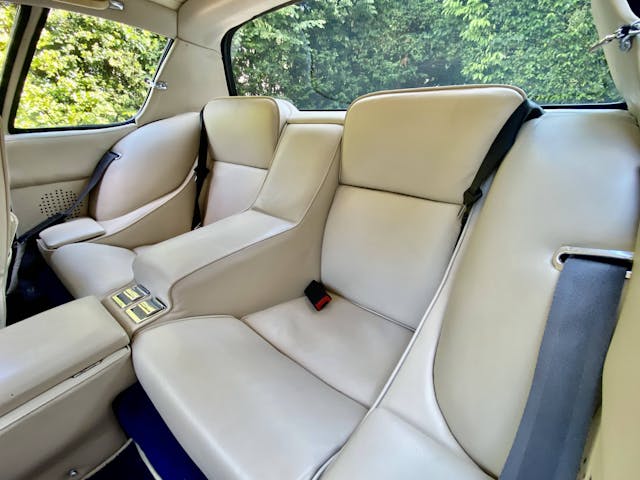
In 1983, the Interceptor name was reincarnated once again as the product of a new company called Jensen Cars Limited. It looked exactly like a ’70s Interceptor, and with good reason: It was exactly like a ’70s Interceptor. But a full rebirth was not to be, and only 14 cars were produced.
In 1990, another company had a go and built 36 copies of what were essentially Interceptors from the 1970s. Once again, financial problems threw a wrench in the works. Production ended in ’93.
While never a great financial success, the Interceptor was and is loved by many. It is a delicious combination: a proper English motorcar with a voluptuous Italian body and a stump-pulling American V-8. That mix of the elegant and brutish coupled with an unforgettable name is key to the Interceptor’s devoted fan base. Although not as large in number as the devotees of many other marques, Interceptor fans are very expressive in their love of the brand. And they can be found in every corner of the globe.
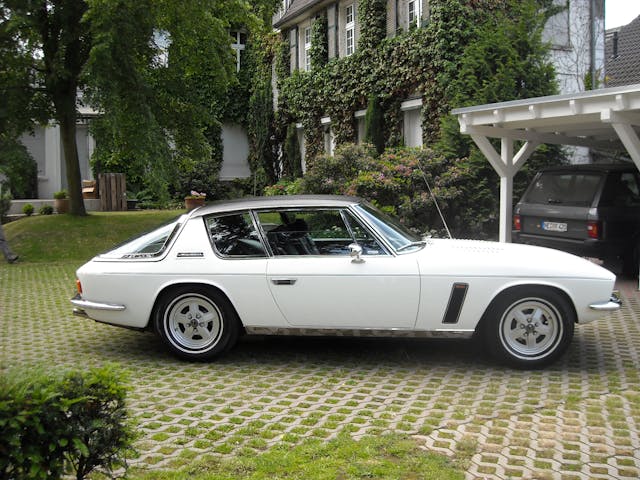
One very dedicated Jensen owner is Thomas Hoeller of Düsseldorf, Germany. Hoeller has traveled the world photographing and documenting Interceptors and has restored several. His travels took him to Carrozzeria Touring, the coachbuilder that had built the first copies of the second-generation Interceptor in 1966. He had heard that the design studies for that car had been lost, so he drove to Milan to search for the missing documents. There he found them in blueprint form and left with a copy.
Dino Fritz of Adelaide, South Australia, is another Interceptor devotee, who grew up in the ’70s and developed a passion for automobiles, “particularly the exotic ones,” he said. But the Adelaide of the ’70s didn’t offer much in the way of automotive pulchritude.
“However, one street away,” he said, “there was a home that had a Jensen Interceptor parked in the driveway. Here was an actual exotic car that I could actually see in the flesh, and I vividly remember the curves on the car and that back window.”
In 1989, Fritz had an opportunity to buy an Interceptor that had been totaled by an insurance company. He joined a Jensen car club, where he learned about Lucas electrical gremlins and the great SP model, so he upgraded the electrical, rebuilt the engine to SP spec (385 hp), and modified the interior to resemble that of the last Interceptor, the short-lived Mark IV of the 1980s. He’s now beginning restoration of an Interceptor convertible that he located in the UK.
The car is habit-forming.
***
Check out the Hagerty Media homepage so you don’t miss a single story, or better yet, bookmark it. To get our best stories delivered right to your inbox, subscribe to our newsletters.
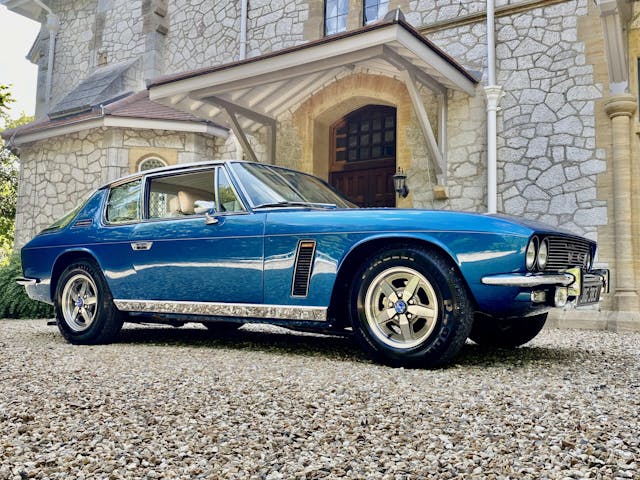
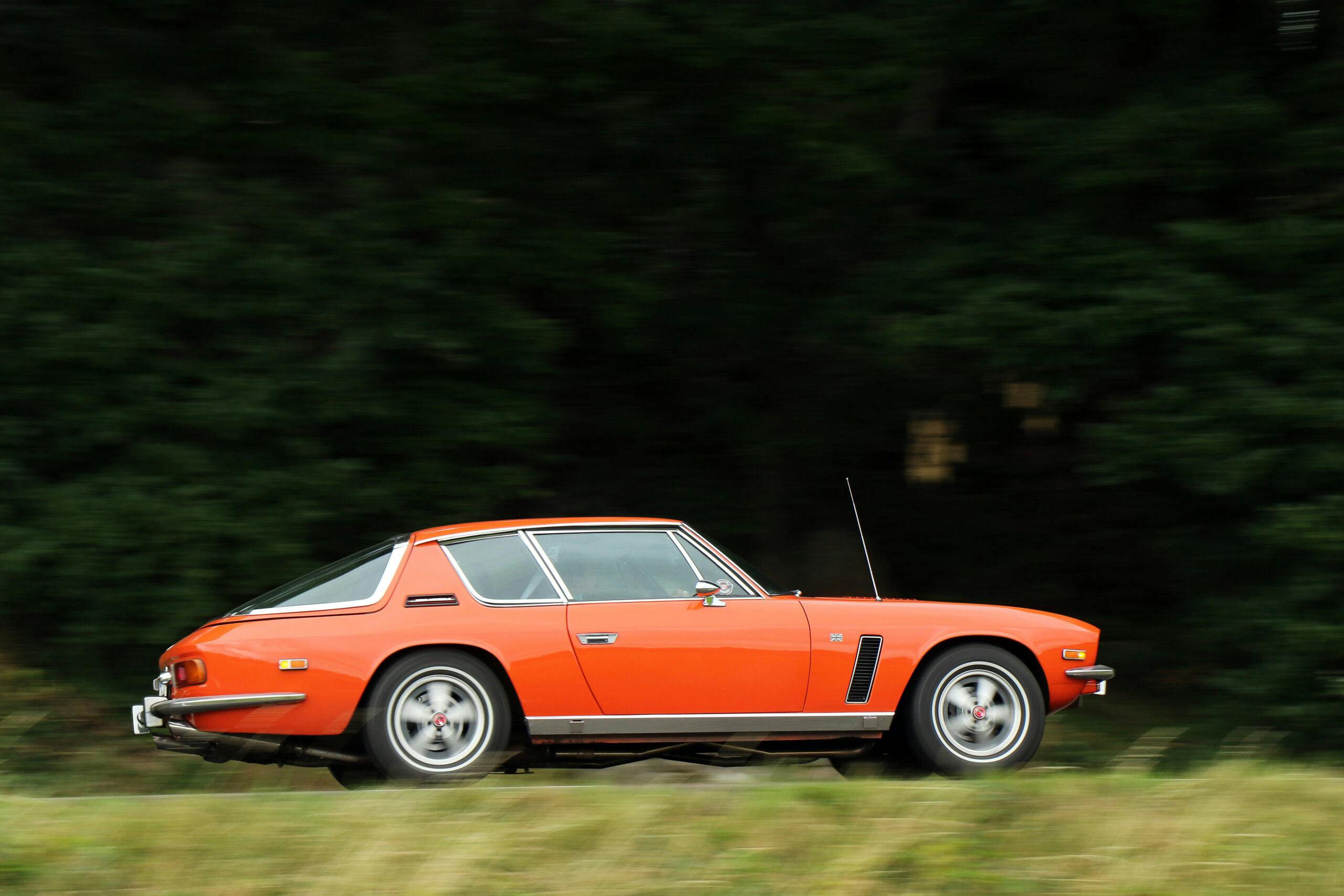
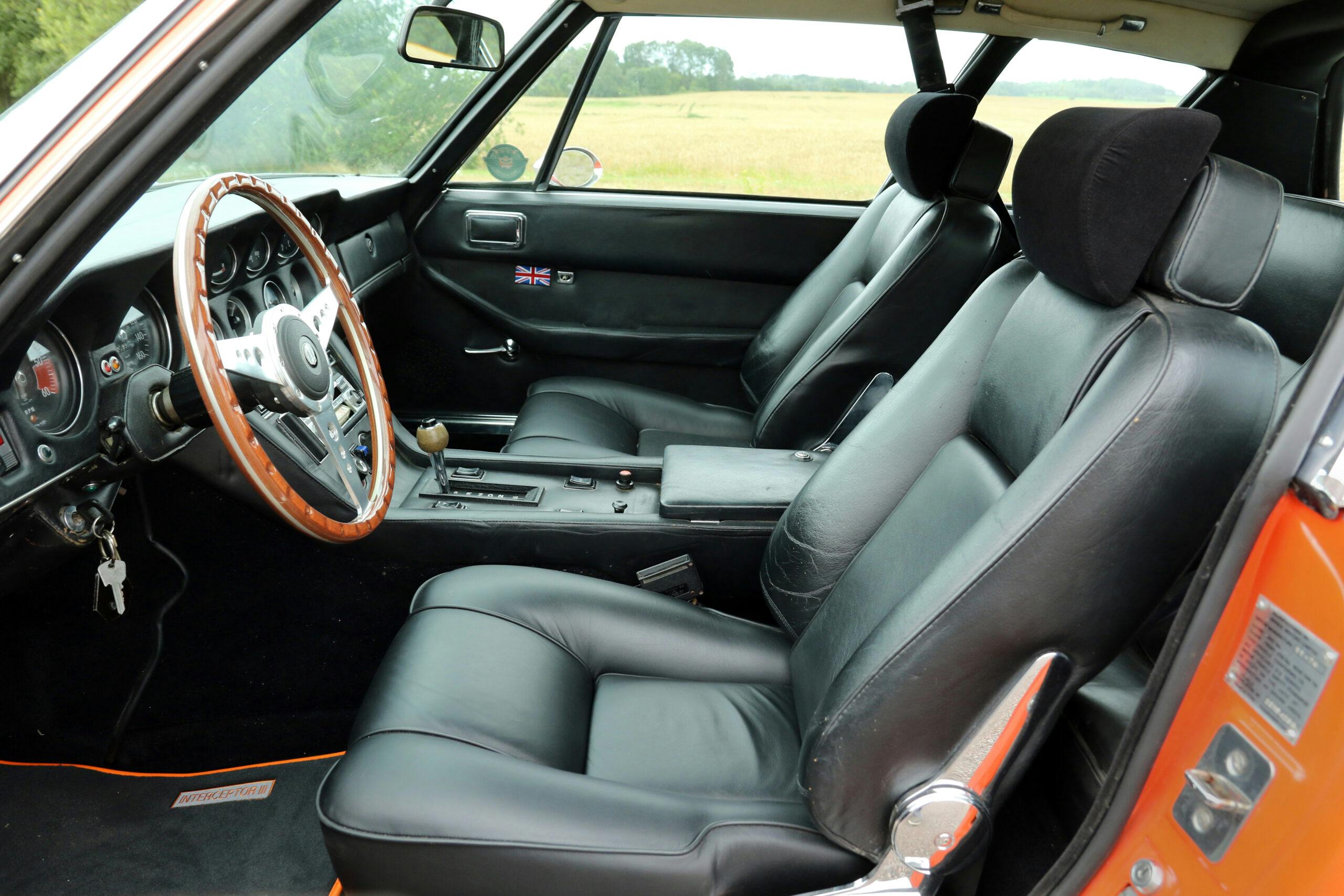

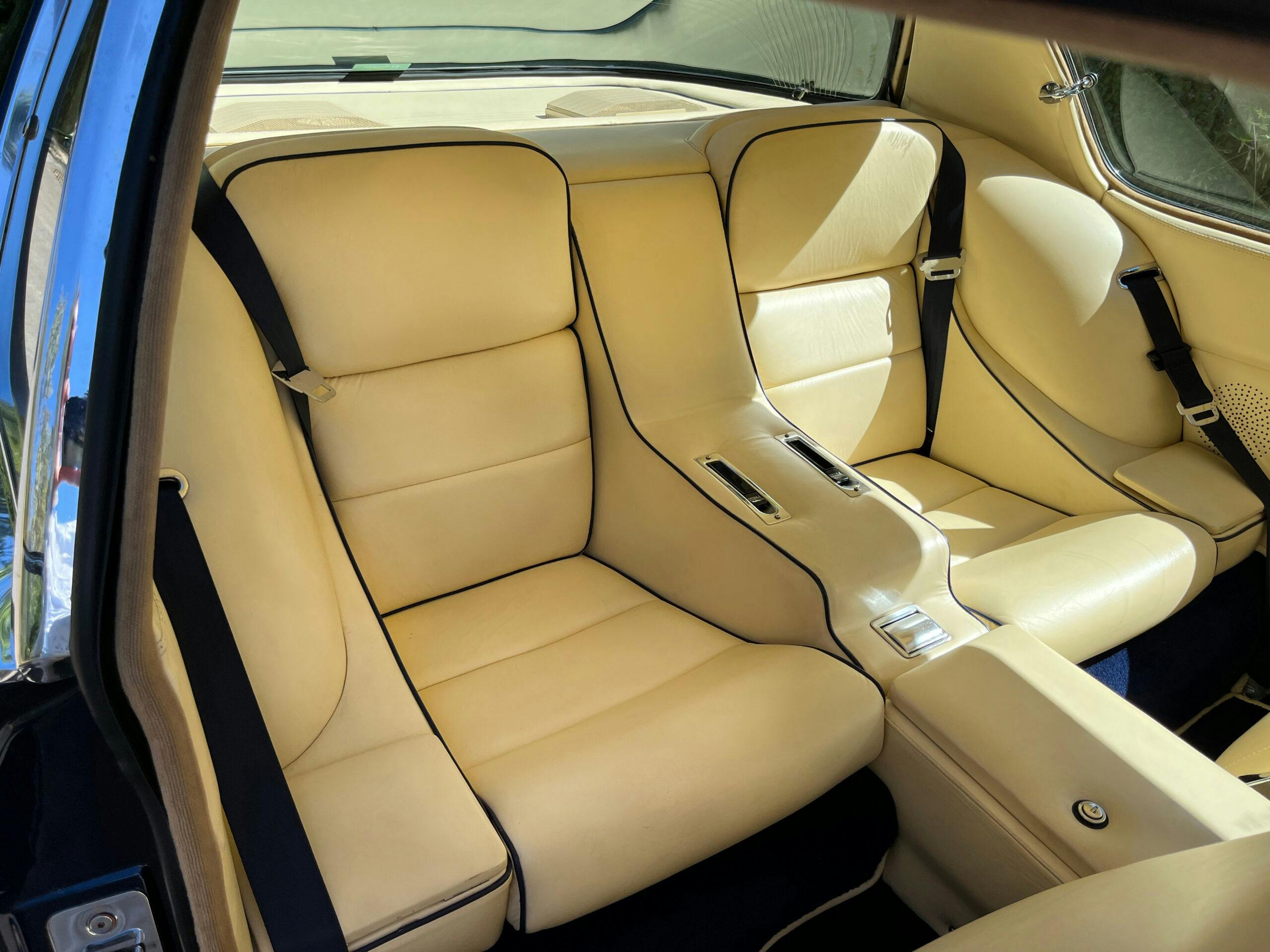


Great article and wonderful cars. Love the Interceptor, and all of its variations! Thanks for writing and posting this article!
I was editor of the Association of Jensen Owners magazine, White Lady (referred to the 1st Jensen car’s nickname) in the mid/late 80’s. In ’89 I went to West Browmwich (where the original Jensen factory was located) to visit Jensen Cars LTD. Ian Orford, who was in charge, picked me up at the train station in a new Interceptor SP4. That was pretty cool!
They also did renovations and one in particular was for Dave Horton who had them fit the six-pack carbs as well as a few other “performance enhancements” so much that they had to agree to not build another one like it. Still have the slides they used for the S4 brochures and in a magazine, Dave Horton’s, the ones I took from the Interceptors in progress of being built, as well as members Interceptors form all over the world. Truly a great car!
Owning a Jensen Healey and a Jensen GT (1 of 511 built) at the of visiting, I was like a kid in a candy store as they had all the original parts from Jensen Motors. Currently I’m renovating/restoring/modifying that Jensen GT which I’ve owned 39 years. Like an Interceptor, you don’t see yourself coming and going in one!
Jensen Motors mantra was “It’s hard to be humble when you drive a Jensen”
Great story! Thanks for your insights.
I still have mine. It is blue and always handled well. It even did the loop on the Hot Wheels track even with Matchbox wheels.
Kidding aside this is one car Matchbox taught me what it was long ago. I collected many Matchbox cars and they were very good in getting kids to recognize cars they had we never saw.
My dads business partner imported an intercepter in the 70s to Adelaide. It was a reddish brown colour. He lived in Passadena, south of Adelaide . I wonder if that’s the one Dan Fritz saw. I still remember going for a ride in it as a teenager. A truly memorable car.
The Jensen Interceptor is one of the few ‘ones that got away’ for me. I saw it at the local swap meet (a mostly Ford/Chevy/Dodge event) and wanted it. It was an intact, running car going for 12K which was a bit beyond my discretionary spending limit at the time, so I had to pass. Since then, I have seen few for sale and none even approaching that price.
When I autocrossed back in the ’70’s, one of the regular competitors drove a Jensen Interceptor. It was always fun watching him haul that beast around a tight autocross course.
Kjell Qvale of San Francisco was greatly responsible for bringing the Jensen Interceptor to the US. The 4 wheel drive version, built for the home market, pioneered the use of antilock brakes.
It is a cool car. i can see why people love it. Too bad they are so rare here in the states.
I was under the impression that some Jensen had Chevy and Ford engines – cheaper and less weight on the front end. A Jensen sat a block from my house for most of a decade. gone for a decade.
Robert, Jensen Interceptors were only available with the Chrysler engines. You may be thinking of Allards that were offered with a variety of engines. I currently have three Interceptors in my garage, as well as a Jensen Healey and a Jensen GT. They are all wonderful cars and, IMHO, vastly under appreciated.
You can’t beat an Interceptor: Check the F106 – “An all weather interceptor known for its efficiency and ability to counter bomber aircraft up to 70,000 feet, the F-106A had a maximum speed of 1,525 mph (Mach 2.3) and a range of 1,500 miles. It carried four Falcon missiles and one Genie nuclear rocket.”
We have a BROOKLANDS BOOK, “Jensen Interceptor 1966-1976” for sale. Call 888-343-3325 or 519-756-1010.
One of my fave cars. I drooled over an FF, the first Jensen I saw in the flesh, at East Grinstead in 1972. My ten-year-old self knew nothing of petrol prices, front axles, or overheating, of course. I have always kept an eye out for Interceptors ever since, but have seen maybe only two or three “in the wild”. One of them was an Interceptor in an advanced state of decay was parked at Ganges Auto Marine below (Dagwood’s) on Salt Spring Island, B.C., for a long time. If it us still there, one of us (someone with deeper pockets than I have) should save it…
The Jensen on Saltspring Island was listed for sale about three years ago. Don’t know if it found a buyer. Would have cost more than the restored value to restore as it appeared the photos. I remember seeing one for sale in a driveway north of Courtenay BC in reasonable condition. This would have been several years ago.
Gary, and AG1962 — I’ve got a 1975 wood-dash Convertible and live in Victoria; trips to Saltspring always included a peek at that rusted-out RHD Saloon, never licensed in B.C. It was sold to a fellow in Kamloops for perhaps $7K, and his plans are to restore it — apparently he’s got the necessary skills. And pockets.
I hung around the local 7-11 with some other motor heads while in high school during the mid to late 70’s. There was a blue Jensen Interceptor that almost always appeared after 1 am on Friday and Saturday nights. The car was beautiful, but the sound that emerged from its exhaust would give me goosebumps. Almost as sweet as an Allison aircraft engine.
In the early 1990’s my wife and I were living and working in St. Cloud MN. There was a brown one in our neighborhood that I rarely saw out of the garage. I knew what it was, but I was more into street rods at the time so never made the effort to get to know the owner, something I regret to this day. It was a gorgeous car.